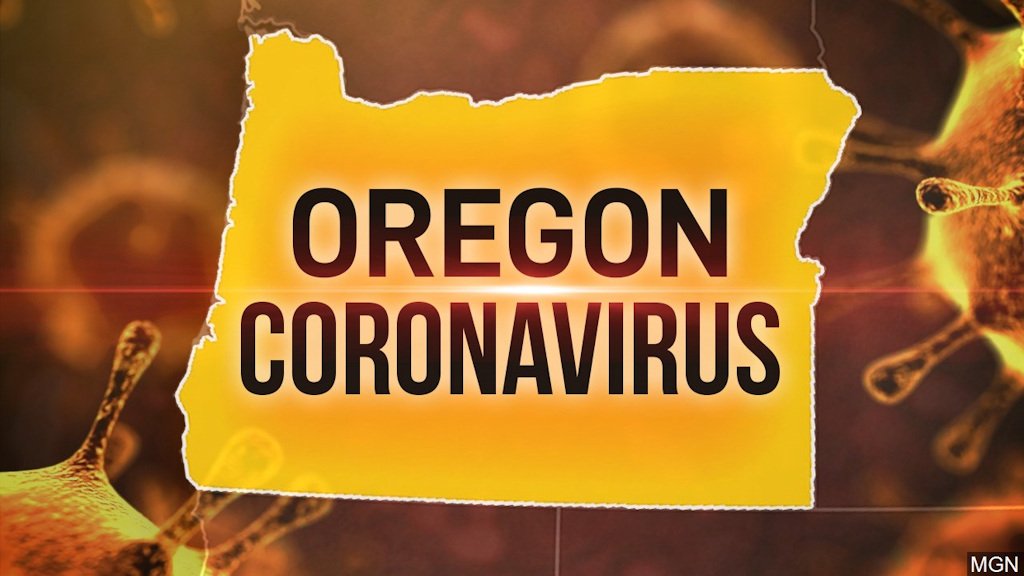Oregon COVID-19 deaths reach 101; all have had underlying conditions

Heart disease main underlying condition, new statistics show
PORTLAND, Ore. (KTVZ) — COVID-19 has claimed two more lives in Oregon, raising the state’s death toll to 101, the Oregon Health Authority reported Wednesday.
OHA also reported 61 new cases of COVID-19 as of 8 a.m. Wednesday, bringing the state total to 2,446, along with 52,026 negative test results.
The new COVID-19 cases reported Wednesday were in the following counties: Clackamas (1), Hood River (1), Jefferson (4, for a total of 10), Linn (1), Marion (18), Multnomah (19), Polk (1), Umatilla (8), Washington (7) and Yamhill (1).
To see more case and county-level data, Oregon Health updates its website once a day: www.healthoregon.org/coronavirus.
Oregon’s 100th COVID-19 death was a 75-year-old man in Multnomah County who tested positive on April 20th and died on April 22nd at his residence. He had underlying medical conditions.
Oregon’s 101st COVID-19 death was a 71-year-old woman in Multnomah County who tested positive on April 11th and died on April 20th at Adventist Hospital. She had underlying medical conditions.
Deschutes County had no new cases reported Wednesday and held at 75 cases, along with 1,834 negative test results. Crook County has one case reported and 208 negative results. Jefferson County has 10 cases -- including eight reported on the Warm Springs Indian Reservation -- and 232 negative results.
Deschutes County reports 53 of its 75 cases have recovered.
All those who have died in the state from the coronavirus had underlying health conditions, said health authority spokesman Jonathan Modie. Almost 60% had cardiovascular disease, according to a table published by the Oregon Health Authority late Tuesday.
The data, based on case interviews and medical records of 73 people who died, marked the first time the agency specified what the underlying conditions have been.
“It does show the insidiousness and severity of this disease and how much it attacks the body,” Modie said.
A person who died may have had more than one underlying condition, the OHA noted.
The second-highest underlying medical condition was a neurological or neurodevelopmental issue. Neurological disorders include epilepsy, Alzheimer’s disease, and cerebrovascular diseases including stroke, multiple sclerosis and Parkinson’s disease.
Other underlying conditions included diabetes, in 33% of cases; lung disease, 29%; kidney disease, 25%; 18% with compromised immune systems; and liver disease, 7%.
Dawn Nolt, associate professor of pediatrics of the division of infectious diseases at Oregon Health & Science University in Portland, said she is not surprised that diseases of major organs and poor immune system are a factor in so many deaths.
“You are probably going to have a harder time combating the infection and in fact may have more serious consequences,” Nolt said.
Around half of the confirmed deaths in Oregon of the coronavirus were people 80 or older. One-quarter were 70-79.
Unless state health officials separate single condition from multiple conditions, it will be impossible to assess whether it is a particular condition, or some combination of conditions, that makes COVID-19 patients most at risk of dying, said Chunhuei Chi, director of the Center for Global Health at Oregon State University in Corvallis.
“For example, I can’t say that cardiovascular disease is the highest risk of underlying condition to die from COVID-19,” Chi said.
If a person had smoked before and quit, that was also listed as an underlying condition, with 25% of fatal cases in that category. However, OHA did not specify how long ago they quit smoking.
“To a former smoker, it might present some residual injury that makes it a little harder to combat the infection,” said Nolt.
Or the numbers could simply reflect that a greater percentage of the population smoked when those people were younger than the percentage today, she said.
Only 1.4% of those who died were listed as current smokers.
Oregon Health Plan applications show increase
Preliminary numbers from the Oregon Health Plan (OHP) are starting to show an uptick in new member enrollments. Applications wfor OHP averaged 776 per day in March and April compared with 536 per day in January and February. Preliminary data for March show that Medicaid enrolled 23,000 new members. This month, Medicaid has enrolled nearly 19,000 new members as of April 24.
“Many Oregonians have lost their jobs and as a result, their health coverage,” said OHA director Patrick Allen. “Taking care of your physical and mental health, especially at this time, is critically important. We encourage individuals to see if they are eligible for the Oregon Health Plan.”
The Oregon Health Authority has made several changes to its Medicaid program to support health care access for Oregonians during the response to COVID-19. These changes include:
- Individuals can sign up for OHP without having to verify their income (submit a pay stub) with their application. They will be able to self-attest, which will help Oregonians get access to OHP coverage more quickly.
- Members who are currently enrolled in the Oregon Health Plan will not lose coverage during this crisis. About 20,000 members per month usually exit the program. About half of those are expected to stay enrolled due to this policy change, which took effect March 15.
- Federal stimulus payments and increased unemployment payments will not affect OHP eligibility. They will not be counted during the application process or when members report a change in their household.
About one in four Oregonians receive health coverage through OHP. As of March 31, more than 996,000 Oregonians were enrolled in OHP, and by April 27, enrollment had grown to nearly 1,016,000.
OHP provides free physical, dental and behavioral health coverage to Oregonians who qualify. For more information about applying for OHP, go to OHP.Oregon.gov.
Stay informed about COVID-19:
Oregon response: The Oregon Health Authority leads the state response.
United States response: The Centers for Disease Control and Prevention leads the U.S. response.
Global response: The World Health Organization guides the global response.



